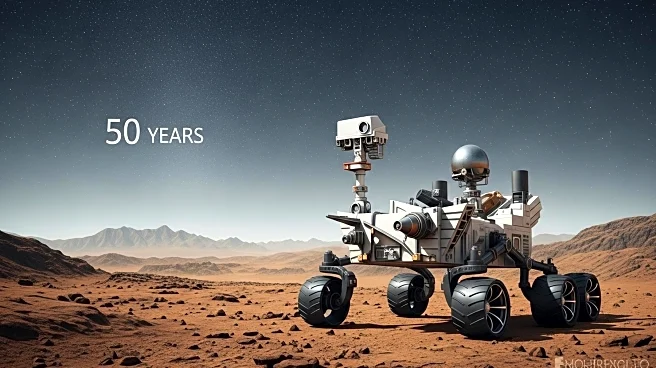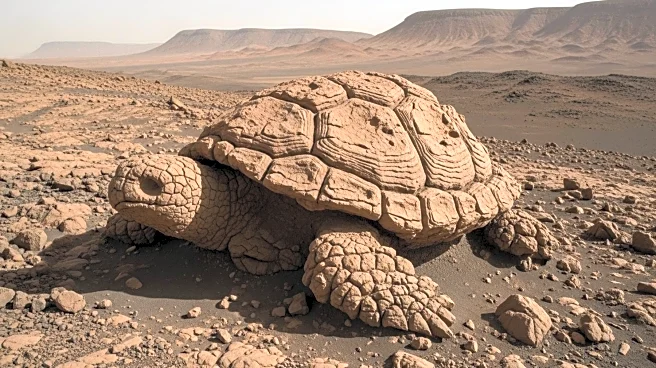What's Happening?
NASA is set to reveal a new discovery made by the Perseverance Mars rover during a teleconference scheduled for September 10. The rover collected a sample named 'Sapphire Canyon' from Jezero Crater, a site believed to have once hosted life. The sample was extracted from a rock known as 'Cheyava Falls,' which has shown chemical evidence suggesting possible life-related reactions. The teleconference will be streamed on NASA's website and Space.com, featuring visuals and discussions by agency officials. The discovery adds to the 25 samples collected by Perseverance, aimed at understanding Mars' geological and potential biological history.
Why It's Important?
The discovery of the Sapphire Canyon sample is significant as it may provide insights into the possibility of life on Mars. The chemical evidence found in the sample could help scientists understand the conditions that might have supported life on the planet. This finding is crucial for the Mars Sample Return program, which aims to bring Martian samples back to Earth for detailed analysis. The program's future is uncertain due to budget constraints and shifting priorities since the Trump administration. The potential for life on Mars has profound implications for astrobiology and the search for extraterrestrial life.
What's Next?
The teleconference will provide more details about the Sapphire Canyon sample and its implications. Scientists supporting the Mars Sample Return program anticipate that the sample may require Earth-based analysis to uncover more information. The conference may also discuss the challenges and future plans for the Mars Sample Return program, considering current budgetary and logistical constraints. The release of a detailed paper on the findings is expected, which will further elaborate on the scientific significance of the discovery.
Beyond the Headlines
The discovery raises ethical and scientific questions about the exploration and potential colonization of Mars. Understanding the presence of life-related chemical reactions on Mars could influence future missions and the development of technologies for space exploration. It also highlights the importance of international collaboration in space research, as the findings could impact global scientific efforts to study Mars and other celestial bodies.











